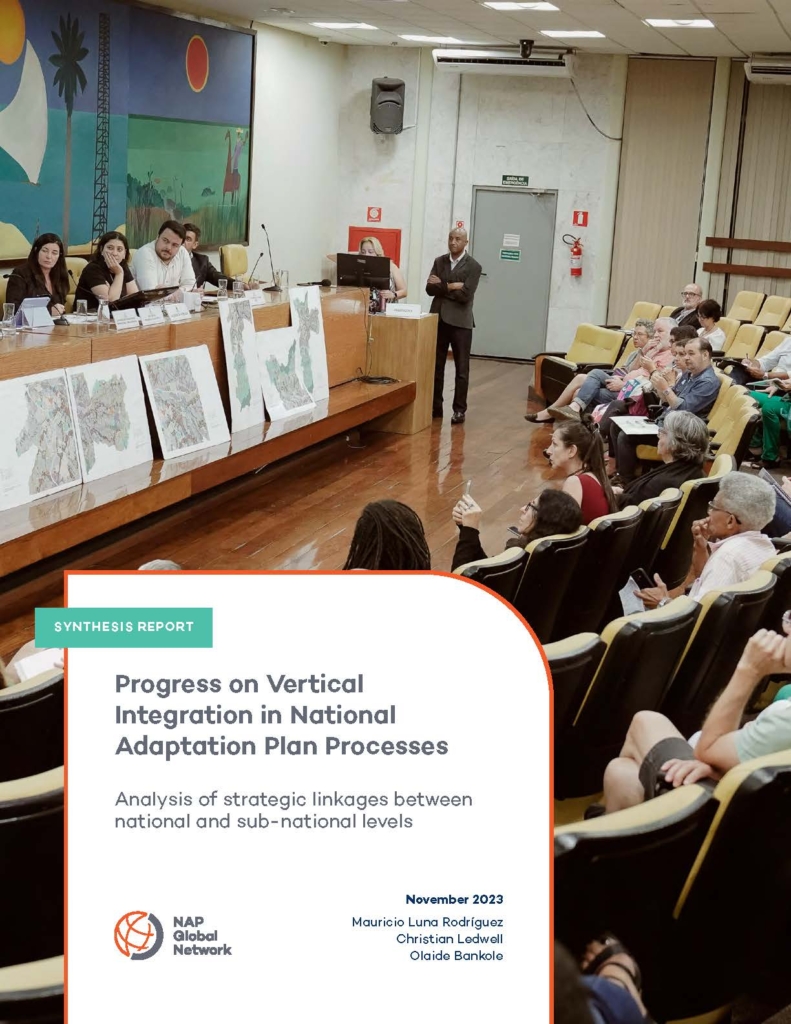
Progress on Vertical Integration in National Adaptation Plan Processes: Analysis of strategic linkages between national and sub-national levels
Synthesis report
Vertical integration for climate change adaptation is the process of creating intentional and strategic linkages between national and sub-national governance levels in the planning, implementation, and monitoring, evaluation, and learning (MEL). Sub-national-level governments and local actors are already taking action to adapt to the climate change impacts being felt by communities. Local-level adaptation needs to be carefully linked to and supported by national-level adaptation planning to channel resources to the people, places, and systems that need them most.
The national adaptation plan (NAP) process presents a critically important opportunity to scale up effective, inclusive adaptation. By building strategic and intentional links with sub-national adaptation planning and implementation through vertical integration, the NAP process can support climate change adaptation priorities so that they reflect local realities, channel resources to sub-national actors and actions, and ensure that sub-national adaptation efforts are captured when progress is tracked and reported.
This synthesis report presents an analysis of how countries are advancing vertical integration in NAP processes. The findings are based on data collected through a review of NAP documents submitted to the United Nations Framework Convention on Climate Change’s NAP Central as of July 2023, and the recommendations are complemented with information gathered during the NAP Global Network Secretariat’s engagement with countries’ NAP teams.
Related Content
- Three Challenges in the Adaptation Process That Are Opportunities for Vertical Integration
- Peer Learning Summit: Vertical Integration in the National Adaptation Plan (NAP) Process
- NAP Expo 2023: Vertical integration is vital for NAP processes’ effectiveness
Publisher: International Institute for Sustainable Development